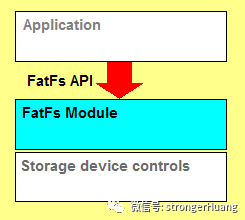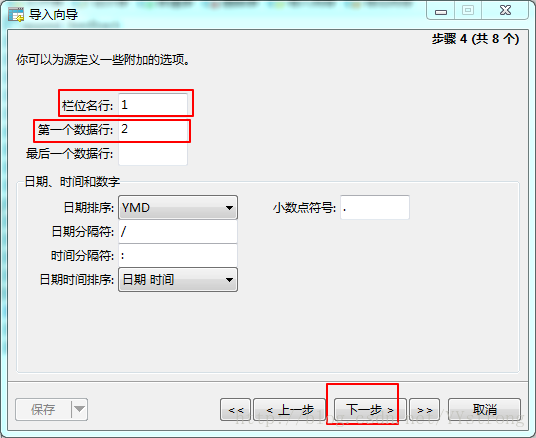小型文件系统FatFS和LittleFS对比和区别
对于许多物联网设备而言,拥有一个小型且具有弹性的文件系统至关重要。
在MCU上运行的文件系统不多,绝大部分人应该知道FatFS这个文件系统,今天就给大家讲讲FatFS和LittleFS的内容,以及他们之间的一些差异。
一、文件系统FatFS
FatFs是一个通用的文件系统(FAT/exFAT)模块,用于在小型嵌入式系统中实现FAT文件系统。
网址:
http://elm-chan.org/fsw/ff/00index_e.html
FatFs组件的编写遵循ANSI C(C89),完全分离于磁盘 I/O 层,因此不依赖于硬件平台。它可以嵌入到资源有限的微控制器中,如 8051, PIC, AVR, ARM, Z80, RX等等,不需要做任何修改。
<span style="box-sizing: border-box; outline: 0px; –tw-shadow: 0 0 #0000; –tw-ring-inset: var(–tw-empty, ); –tw-ring-offset-width: 0px; –tw-ring-offset-color: #fff; –tw-ring-color: rgba(66, 153, 225, 0.5); –tw-ring-offset-shadow: 0 0 #0000; –tw-ring-shadow: 0 0 #0000; font-size: 16px; overflow-wrap: break-word; letter-spacing: normal; orphans: 2; text-indent: 0px; text-transform: none; white-space: normal; widows: 2; word-spacing: 0px; -webkit-text-stroke-width: 0px; background-color: rgb(255, 255, 255); color: rgb(77, 77, 77); font-family: -apple-system, "SF UI Text", Arial, "PingFang SC", "Hiragino Sans GB", "Microsoft YaHei", "WenQuanYi Micro Hei", sans-serif, SimHei, SimSun; font-variant-caps: normal; font-variant-ligatures: normal; line-height: 26px;"–<-来自百度百科
特征
a.DOS/ Windows兼容的FAT/exFAT文件系统。
b.平台无关,容易移植。
c.程序代码和工作区的占用空间非常小。
d.支持以下各种配置选项:
ANSI / OEM或Unicode中的长文件名。
exFAT文件系统,64位LBA和GPT可存储大量数据。
RTOS的线程安全。
多个卷(物理驱动器和分区)。
可变扇区大小。
多个代码页,包括DBCS。
只读,可选API,I / O缓冲区等…


如果你会使用STM32CubeMX,想要使用FatFS非常容易,轻松几步就能将STM32“变成”一个U盘。
二、文件系统Littlefs
知道Littlefs文件系统的人相对比较少,但是如果使用过Mbed OS系统的人绝大部分都应该知道。
Mbed OS是Arm公司针对Cortex-M系列处理器,面向IoT开发的一套免费、开源开源嵌入式操作系统,专门为物联网中的“things”而设计。

而Littlefs只是Mbed其中的一部分内容,如下框图:

源码地址:
https://github.com/armmbed/mbed-littlefs
Littlefs特点:
占用资源小:物联网设备受到ROM和RAM的限制。
断电恢复能力:要求文件系统保持一致,并将数据刷新到底层存储。
平均磨损:通常情况下,存储支持每块数量有限的擦除,因此使用整个存储设备对于可靠性非常重要。

用法也挺简单,参看官方例程:
#include "LittleFileSystem2.h"
#include "SPIFBlockDevice.h"
// Physical block device, can be any device that supports the BlockDevice API
SPIFBlockDevice bd(PTE2, PTE4, PTE1, PTE5);
// Storage for the littlefs
LittleFileSystem2 fs("fs");
// Entry point
int main() {
// Mount the filesystem
int err = fs.mount(&bd);
if (err) {
// Reformat if we can't mount the filesystem,
// this should only happen on the first boot
LittleFileSystem2::format(&bd);
fs.mount(&bd);
}
// Read the boot count
uint32_t boot_count = 0;
FILE *f = fopen("/fs/boot_count", "r+");
if (!f) {
// Create the file if it doesn't exist
f = fopen("/fs/boot_count", "w+");
}
fread(&boot_count, sizeof(boot_count), 1, f);
// Update the boot count
boot_count += 1;
rewind(f);
fwrite(&boot_count, sizeof(boot_count), 1, f);
// Remember that storage may not be updated until the file
// is closed successfully
fclose(f);
// Release any resources we were using
fs.unmount();
// Print the boot count
printf("boot_count: %ld\n", boot_count);
}
三、文件系统对比
每一种产物都有它存在的价值,文件系统也同样如此,各有各的优缺点,下面简单罗列几点它们的区别。
1.资源RAM / ROM大小
Littlefs是Mbed OS中的高完整性嵌入式文件系统,经过优化可与RAM和ROM有限的MCU一起使用。

Littlefs高度集成的嵌入式文件系统使用比FAT少的13K ROM和少于4K的RAM。
2.失电恢复能力
littlefs具有强大的copy-on-write保证,并且磁盘上的存储总是保持有效状态,可能有随机电源故障的系统适合该文件系统。
3.磨损均衡
嵌入式设备使用的大多数存储芯片都支持每个扇区有限的擦除集,如果没有均衡,则嵌入式设备的寿命可能会受到影响。
参考来源:https://os.mbed.com/blog/entry/littlefs-high-integrity-embedded-fs/
本文转自:https://blog.csdn.net/ybhuangfugui/article/details/105780880


